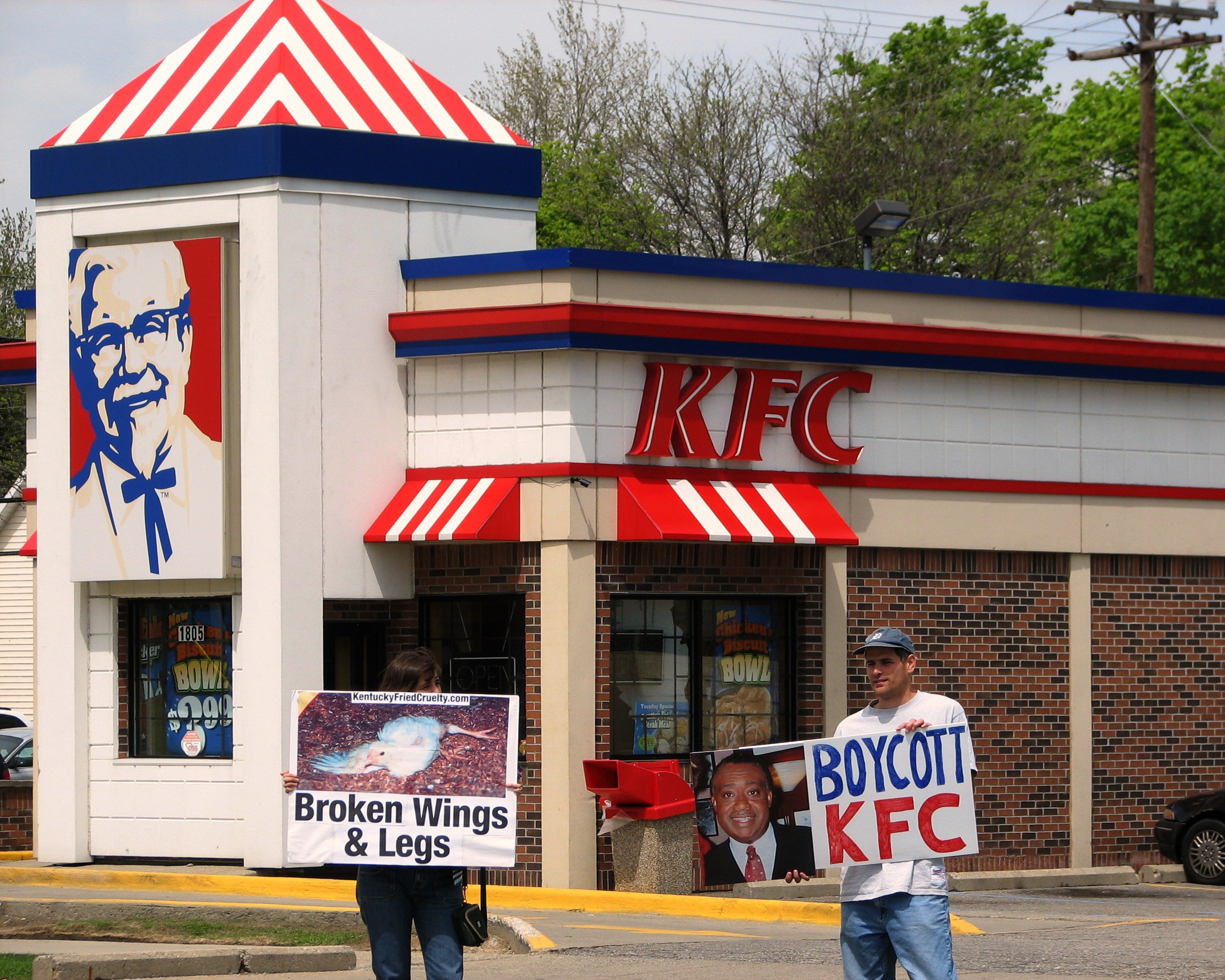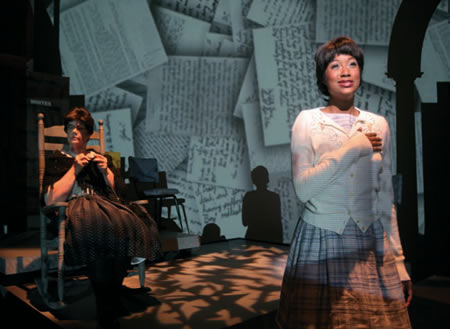|
McCree Harris
McCree L. Harris (July 10, 1934 – July 21, 2000) was an American educator and political activist leader. Harris worked at the all-Black Monroe Comprehensive High School, where she taught Latin, French, and Social Studies. She is best known for her participation with the Freedom Singers and for encouraging her students' involvement in the Civil Rights Movement through voter registration marches and by leading groups of students to downtown Albany, Georgia, after school hours to test desegregation rulings at local stores and movie theaters. Early life McCree L. Harris was an African American activist born in 1934 in Albany, Georgia. Her family life was sheltered, as she was raised by Reverend Isaiah A. Harris and Katie B. Harris, who both dedicated their time towards the racial equality and economic empowerment of African Americans. As the founder of Mt. Calvary Baptist Church, the reverend used the church as a means to support this empowerment with the goal of increasing vote ... [...More Info...] [...Related Items...] OR: [Wikipedia] [Google] [Baidu] |
Albany, Georgia
Albany ( ) is a city in the U.S. state of Georgia. Located on the Flint River, it is the seat of Dougherty County, and is the sole incorporated city in that county. Located in southwest Georgia, it is the principal city of the Albany, Georgia metropolitan area. The population was 77,434 at the 2010 U.S. Census, making it the eighth-largest city in the state. It became prominent in the nineteenth century as a shipping and market center, first served by riverboats. Scheduled steamboats connected Albany with the busy port of Apalachicola, Florida. They were replaced by railroads. Seven lines met in Albany, and it was a center of trade in the Southeast. It is part of the Black Belt, the extensive area in the Deep South of cotton plantations. From the mid-20th century, it received military investment during World War II and after, that helped develop the region. Albany and this area were prominent during the civil rights era, particularly during the early 1960s as activists worked ... [...More Info...] [...Related Items...] OR: [Wikipedia] [Google] [Baidu] |
Martin Luther King Jr
Martin Luther King Jr. (born Michael King Jr.; January 15, 1929 – April 4, 1968) was an American Baptist minister and activist, one of the most prominent leaders in the civil rights movement from 1955 until his assassination in 1968. An African American church leader and the son of early civil rights activist and minister Martin Luther King Sr., King advanced civil rights for people of color in the United States through nonviolence and civil disobedience. Inspired by his Christian beliefs and the nonviolent activism of Mahatma Gandhi, he led targeted, nonviolent resistance against Jim Crow laws and other forms of discrimination. King participated in and led marches for the right to vote, desegregation, labor rights, and other civil rights. He oversaw the 1955 Montgomery bus boycott and later became the first president of the Southern Christian Leadership Conference (SCLC). As president of the SCLC, he led the unsuccessful Albany Movement in Albany, ... [...More Info...] [...Related Items...] OR: [Wikipedia] [Google] [Baidu] |
National Council Of Negro Women
The National Council of Negro Women (NCNW) is a nonprofit organization founded in 1935 with the mission to advance the opportunities and the quality of life for African-American women, their families, and communities. Mary McLeod Bethune, the founder of NCNW, wanted to encourage the participation of Negro women in civic, political, economic and educational activities and institutions. The organization was considered as a cleaning house for the dissemination of activities concerning women but wanted to work alongside a group who supported civil rights rather than go to actual protests. Women on the council fought more towards political and economic successes of black women to uplift them in society. NCNW fulfills this mission through research, advocacy, national and community-based services and programs in the United States and Africa. NCNW serves as a super organization that acts as a cohesive umbrella for the other African-American groups that already existed. With its 28 natio ... [...More Info...] [...Related Items...] OR: [Wikipedia] [Google] [Baidu] |
The Freedom Singers
The Freedom Singers originated as a quartet formed in 1962 at Albany State College in Albany, Georgia. After folk singer Pete Seeger witnessed the power of their congregational-style of singing, which fused black Baptist ''a cappella'' church singing with protest songs and chants, their performances drew aid and support to the Student Nonviolent Coordinating Committee (SNCC) during the emerging civil rights movement. Seeger suggested The Freedom Singers as a touring group to the SNCC executive secretary James Forman as a way to fuel future campaigns. As a result, communal song became essential to empowering and educating audiences about civil rights issues and a powerful social weapon of influence in the fight against Jim Crow segregation. Rutha Mae Harris, a former freedom singer, speculated that without the music force of broad communal singing, the civil rights movement may not have resonated beyond of the struggles of the Jim Crow South. Members The original group consisted of ... [...More Info...] [...Related Items...] OR: [Wikipedia] [Google] [Baidu] |
French Language
French ( or ) is a Romance language of the Indo-European family. It descended from the Vulgar Latin of the Roman Empire, as did all Romance languages. French evolved from Gallo-Romance, the Latin spoken in Gaul, and more specifically in Northern Gaul. Its closest relatives are the other langues d'oïl—languages historically spoken in northern France and in southern Belgium, which French ( Francien) largely supplanted. French was also influenced by native Celtic languages of Northern Roman Gaul like Gallia Belgica and by the ( Germanic) Frankish language of the post-Roman Frankish invaders. Today, owing to France's past overseas expansion, there are numerous French-based creole languages, most notably Haitian Creole. A French-speaking person or nation may be referred to as Francophone in both English and French. French is an official language in 29 countries across multiple continents, most of which are members of the ''Organisation internationale de la Francophonie'' ... [...More Info...] [...Related Items...] OR: [Wikipedia] [Google] [Baidu] |
Latin
Latin (, or , ) is a classical language belonging to the Italic branch of the Indo-European languages. Latin was originally a dialect spoken in the lower Tiber area (then known as Latium) around present-day Rome, but through the power of the Roman Republic it became the dominant language in the Italian region and subsequently throughout the Roman Empire. Even after the fall of Western Rome, Latin remained the common language of international communication, science, scholarship and academia in Europe until well into the 18th century, when other regional vernaculars (including its own descendants, the Romance languages) supplanted it in common academic and political usage, and it eventually became a dead language in the modern linguistic definition. Latin is a highly inflected language, with three distinct genders (masculine, feminine, and neuter), six or seven noun cases (nominative, accusative, genitive, dative, ablative, and vocative), five declensions, four verb conjuga ... [...More Info...] [...Related Items...] OR: [Wikipedia] [Google] [Baidu] |
Racial Segregation
Racial segregation is the systematic separation of people into race (human classification), racial or other Ethnicity, ethnic groups in daily life. Racial segregation can amount to the international crime of apartheid and a crimes against humanity, crime against humanity under the Statute of the International Criminal Court. Segregation can involve the wikt:spatial, spatial separation of the races, and mandatory use of different institutions, such as schools and hospitals by people of different races. Specifically, it may be applied to activities such as eating in restaurants, drinking from water fountains, using public toilets, attending schools, going to films, riding buses, renting or purchasing homes or renting hotel rooms. In addition, segregation often allows close contact between members of different racial or ethnic groups in social hierarchy, hierarchical situations, such as allowing a person of one race to work as a servant for a member of another race. Segregation i ... [...More Info...] [...Related Items...] OR: [Wikipedia] [Google] [Baidu] |
SNCC
The Student Nonviolent Coordinating Committee (SNCC, often pronounced ) was the principal channel of student commitment in the United States to the civil rights movement during the 1960s. Emerging in 1960 from the student-led sit-ins at segregated lunch counters in Greensboro, North Carolina, and Nashville, Tennessee, the Committee sought to coordinate and assist direct-action challenges to the civic segregation and political exclusion of African Americans. From 1962, with the support of the Voter Education Project, SNCC committed to the registration and mobilization of black voters in the Deep South. Affiliates such as the Mississippi Freedom Democratic Party and the Lowndes County Freedom Organization in Alabama also worked to increase the pressure on federal and state government to enforce constitutional protections. By the mid-1960s the measured nature of the gains made, and the violence with which they were resisted, were generating dissent from the group's principles of no ... [...More Info...] [...Related Items...] OR: [Wikipedia] [Google] [Baidu] |
Sit-ins
A sit-in or sit-down is a form of direct action that involves one or more people occupying an area for a protest, often to promote political, social, or economic change. The protestors gather conspicuously in a space or building, refusing to move unless their demands are met. The often clearly visible demonstrations are intended to spread awareness among the public, or disrupt the goings-on of the protested organisation. Lunch counter sit-ins were a nonviolent form of protest used to oppose segregation during the civil rights movement, and often provoked heckling and violence from those opposed to their message. United States Civil rights movement The Fellowship of Reconciliation (FOR) and the Congress of Racial Equality (CORE) conducted sit-ins as early as the 1940s. Ernest Calloway refers to Bernice Fisher as "Godmother of the restaurant 'sit-in' technique." In August 1939, African-American attorney Samuel Wilbert Tucker organized the Alexandria Library sit-in at the then- r ... [...More Info...] [...Related Items...] OR: [Wikipedia] [Google] [Baidu] |
Boycott
A boycott is an act of nonviolent, voluntary abstention from a product, person, organization, or country as an expression of protest. It is usually for moral, social, political, or environmental reasons. The purpose of a boycott is to inflict some economic loss on the target, or to indicate a moral outrage, to try to compel the target to alter an objectionable behavior. The word is named after Captain Charles Boycott, agent of an absentee landlord in Ireland, against whom the tactic was successfully employed after a suggestion by Irish nationalist leader Charles Stewart Parnell and his Irish Land League in 1880. Sometimes, a boycott can be a form of consumer activism, sometimes called moral purchasing. When a similar practice is legislated by a national government, it is known as a sanction. Frequently, however, the threat of boycotting a business is an empty threat, with no significant effect on sales. Etymology The word ''boycott'' entered the English language during the ... [...More Info...] [...Related Items...] OR: [Wikipedia] [Google] [Baidu] |
Desegregation
Desegregation is the process of ending the separation of two groups, usually referring to races. Desegregation is typically measured by the index of dissimilarity, allowing researchers to determine whether desegregation efforts are having impact on the settlement patterns of various groups. This is most commonly used in reference to the United States. Desegregation was long a focus of the American civil rights movement, both before and after the United States Supreme Court's decision in ''Brown v. Board of Education'', particularly desegregation of the school systems and the military (''see Military history of African Americans''). Racial integration of society was a closely related goal. US military Early history Starting with King Philip's War in the 17th century, Black and White Americans served together in an integrated environment in the Thirteen Colonies. They continued to fight alongside each other in every American war until the war of 1812. Black people would not fight i ... [...More Info...] [...Related Items...] OR: [Wikipedia] [Google] [Baidu] |






